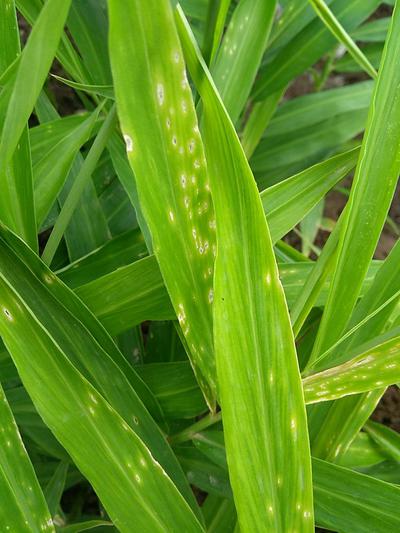Leaf Spot of Ginger
Phyllosticta zingiberis
Fungus
In a Nutshell
- Water soaked leaf spots.
- White spot surrounded by dark margin and yellow halo.
Can also be found in
Symptoms
The disease starts as small, oval water soaked spots on young leaves. Later they become white in the center with dark margin surrounded by yellow halos. Spots will enlarge, coalesce and form larger necrotic lesions. When most of the leaf is covered by the lesions, it will dry and eventually die off.
Recommendations

Organic Control
To this day we are not aware of any biological control method available against this disease. If you know of any successful method to reduce the incidence or the gravity of the symptoms, please contact us.

Chemical Control
Always consider an integrated approach with preventive measures together with biological treatments if available. Spray bordeaux mixture or use fungicides containing hexaconazole (0.1%), propiconazole (0.1%) or carbendazim + mancozeb when the disease is first observed and then repeat the foliar spray two times at an interval of 20 days.
What caused it?
The symptoms are caused by the soil-borne fungi Phyllosticta zingiberis. Primary infection occurs by spores being present in the soil or infected plant debris. Wind and rain splashes are responsible for secondary infection. The pathogen is favored by high humidity and temperatures between 20°C and 28°C. The disease can lead to significant reduction in the number and size of rhizomes. Two week old leaves are most susceptible.
Preventive Measures
- Cultivate moderately resistant cultivars if available.
- Pluck and remove the leaves and/or uproot the infected plants and destroy it.
- Use proper green mulching to reduce soil splashes.
- Provide shade to minimize the disease.
- Crop rotation might help limit the incidence of the disease.


